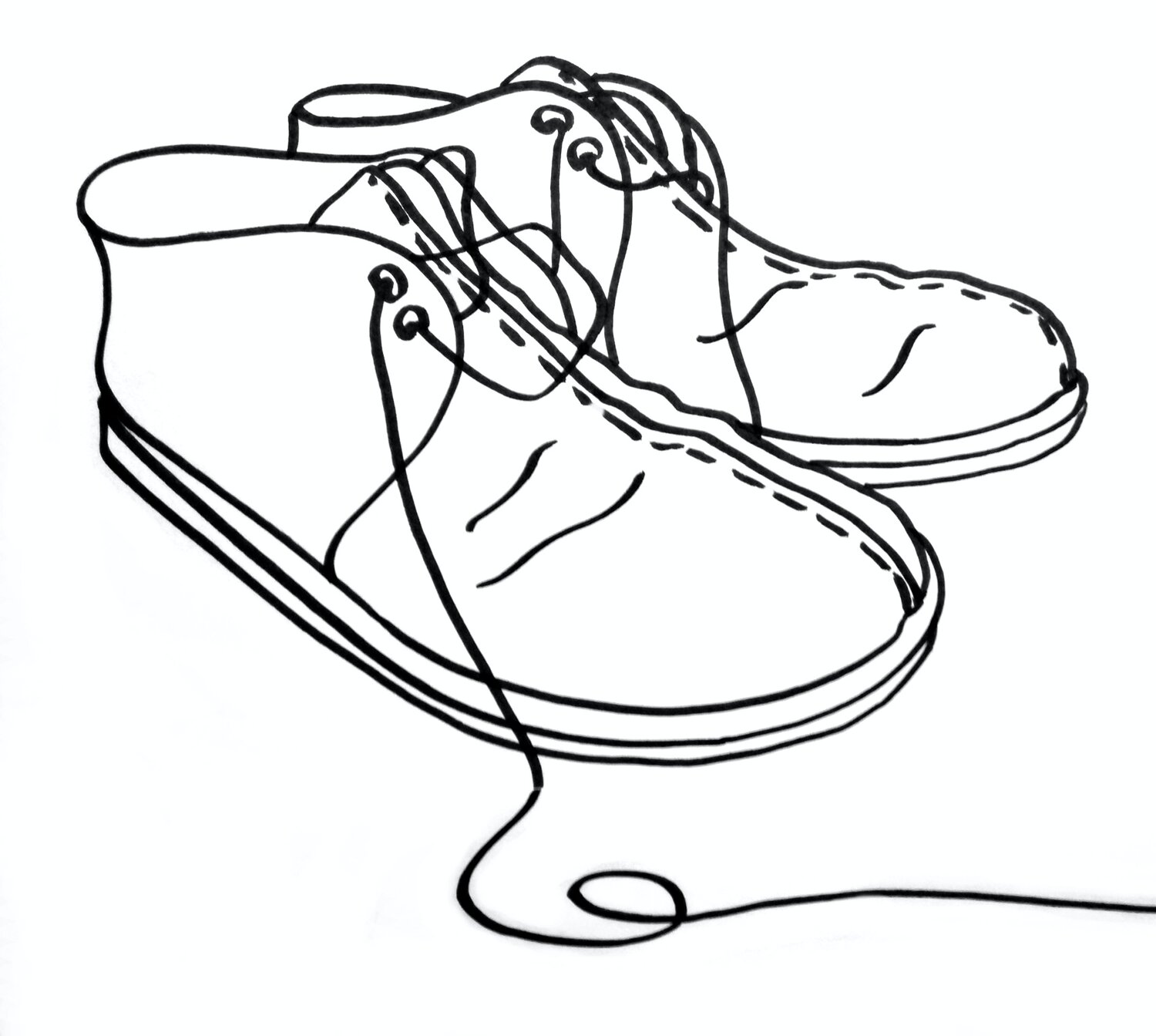Review: 'Shoes' the Musical
Sadler’s Wells at the Peacock Theatre
8th February – 3rd April, 2011
After a short stint in the West End during the latter part of 2010, the Sadler’s Wells production of Shoes, the musical, has returned to the Peacock Theatre until April this year. Coincidentally the show made it’s original debut at the same time as we embarked upon our three year research project, and the current extended run at the Peacock Theatre in conjunction with a regularly packed auditorium provides further acknowledgement that footwear holds a special place in the imagination of the general public.
Writer and director Richard Thomas, perhaps best known for his controversial production of Jerry Springer: the Opera (written with comedian Stewart Lee), started research for the show by wandering the streets with a flip-cam, recording people’s shoe memories. The stories convinced him that a subject so rich, evocative and universal would guarantee West End success: “Everybody, everywhere has to choose a shoe. There is no escape.”
The fact that much of the inspiration for the show came from actual experience is both reassuring and provides and element of integrity, however it is clear that the stories that did make it as far as the final production did so on the merit of their sensational and entertaining themes. The theatre claims the production to be a celebration of “one of the greatest passions of the modern age”, and aims to enable everyone to relate to it in their own way. While I doubt the show will appeal to everyone’s experiences of shoes, some interesting themes do emerge and I will take this opportunity to raise some of these issues.
The show begins with a video projection, only a few minutes in length, representing the history of shoes - all of which are disembodied and appear to dance with a life of their own. This introduction culminates with a revolutionary declaration that announces the beginning of the twentieth century: “it’s your choice, now anything goes”. While the popular assumption that twentieth century consumer culture provided a wealth of freedom and choice is a contentious issue that deserves independent discussion, it is the disembodied shoes in this introduction that are of particular interest. The shoe dancing on its own appears with frequency throughout the show in many different guises. Strangely, for a production that has chosen dance as it’s medium it rarely focuses on the way the shoe makes one move or perform, opting instead to dance about shoes rather than to use shoes to dance. The few exceptions show themselves in surreal interludes, during which a spotlighted dancer proceeds to move from one side of the stage to the other in a manner seemingly dictated by the shoe. Cowboy boots, flippers, waders, skis and clown shoes provide often hilarious movements with which I felt I could identify and almost experience through the dancer. The frequent appearance of the disembodied shoe, however, dancing on its own, seems to reflect a modern tendency to objectify the shoe, seeing it as a representation or symbol as opposed to something that allows us to physically interact with the world in a particular way.
The disembodied shoe does however reflect another common theme – that of the fairy tale, magic and enchantment. The Hans Christian Anderson story the Red Shoes held a contemporary relevance while watching a young man dressed in a red Adidas tracksuit don a pair of trainers by the same brand which appear to imbue him with the capacity to perform an amazing break-dance routine. Continually it seems that the shoes lead him, rather than vice versa, and his addiction and inability to part with the shoes mirrors the original fairy tale. The allusion to the almost magical potential of footwear to transform the wearer appears continually throughout the production, however dis-enchantment is also acknowledged in a postscript to the Cinderella story in which an unhappy and heavily pregnant young lady with equally unhappy partner comically warn against the dangers of being “seduced by a crystal slipper”.
The enchanted shoe leads to notions of the shoe as an object of worship. This is perfectly epitomised when a chorus of nuns religiously chant names such as Jimmy Choo, Manolo Blahnik and Vivienne Westwood. An amusing sketch in which a Birkenstock-wearing Christ character herds a flock of Australian sheepskin Uggboots continues the religious metaphor. Another performance, situated in the shoe shop, features several female dancers celebrating the religious ritual that is shoe shopping. Their “temple of retail” referring to Emile Zola’s “cathedral of consumption” – the early department store - suggests a wealth of comparisons between consumer culture and religion. The presence of the single suited male at the periphery of the stage appears to symbolise the contrasting rational voice of reason when he asks, why not buy a cheaper pair that look the same?
The stories can be seen to acknowledge the experiences of a diversity of wearers, yet when worn by androgynous almost identity-less dancers in leotards it was the shoe’s own identity and agency that was emphasised. Despite this, there does seem to be a bias in which most of the stories seem to be aimed around a normative female experience. Many of the stories appear to perpetuate stereotypical views and the men that actually feature in the storylines, for example Imelda Marcos’ bodyguards and the aforementioned ‘husband’ in the shoe shop, tend to perpetuate the notion that men exhibit rational behaviour and women, irrational – a highly problematic assumption.
Despite very mixed press reviews, there is no doubt that Shoes has reignited debates around a highly charged element of modern mass consumer culture. The show itself is light-hearted and sensational in nature and has certainly fallen short of the promised insight into the fascination with footwear. The popularity of the show with both men and women, however, seems to suggest that many are eager to explore this fascination – opening the way for many other, perhaps more insightful, types of exploration.


